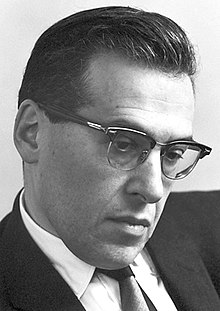The path integral formulation of quantum mechanics is a description of quantum theory that generalizes the action principle of classical mechanics. It replaces the classical notion of a single, unique classical trajectory for a system with a sum, or functional integral, over an infinity of quantum-mechanically possible trajectories to compute a quantum amplitude.
This formulation has proven crucial to the subsequent development of theoretical physics, because manifest Lorentz covariance (time and space components of quantities enter equations in the same way) is easier to achieve than in the operator formalism of canonical quantization. Unlike previous methods, the path integral allows a physicist to easily change coordinates between very different canonical descriptions of the same quantum system. Another advantage is that it is in practice easier to guess the correct form of the Lagrangian of a theory, which naturally enters the path integrals (for interactions of a certain type, these are coordinate space or Feynman path integrals), than the Hamiltonian. Possible downsides of the approach include that unitarity (this is related to conservation of probability; the probabilities of all physically possible outcomes must add up to one) of the S-matrix is obscure in the formulation. The path-integral approach has been proved to be equivalent to the other formalisms of quantum mechanics and quantum field theory. Thus, by deriving either approach from the other, problems associated with one or the other approach (as exemplified by Lorentz covariance or unitarity) go away.
The path integral also relates quantum and stochastic processes, and this provided the basis for the grand synthesis of the 1970s, which unified quantum field theory with the statistical field theory of a fluctuating field near a second-order phase transition. The Schrödinger equation is a diffusion equation with an imaginary diffusion constant, and the path integral is an analytic continuation of a method for summing up all possible random walks.
The basic idea of the path integral formulation can be traced back to Norbert Wiener, who introduced the Wiener integral for solving problems in diffusion and Brownian motion. This idea was extended to the use of the Lagrangian in quantum mechanics by P. A. M. Dirac in his 1933 article. The complete method was developed in 1948 by Richard Feynman. Some preliminaries were worked out earlier in his doctoral work under the supervision of John Archibald Wheeler. The original motivation stemmed from the desire to obtain a quantum-mechanical formulation for the Wheeler–Feynman absorber theory using a Lagrangian (rather than a Hamiltonian) as a starting point.
https://en.wikipedia.org/wiki/Path_integral_formulation

